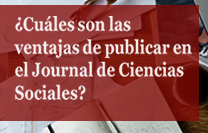Measuring Sustainability
Using the Capabilities Approach in Sustainable Development Assessment
Resumen
Este documento presenta, demuestra y evalúa un método interdisciplinario para realizar investigaciones cualitativas y cuantitativas sobre el desarrollo sostenible informadas por el marco del Enfoque de Capacidades (AC). El desarrollo sostenible es importante para guiar proyectos, políticas y resultados donde se valoran las soluciones a largo plazo. Varios profesionales del desarrollo sostenible han sido pioneros en la investigación utilizando la AC, pero las complejidades sobre la definición y evaluación del desarrollo sostenible dejan espacio para métodos adicionales (Coyle y LeMaster, 2011; Simpson y Basta, 2018). La metodología de investigación etnoeconómica (EERM) presentada aquí es un enfoque de tres métodos y métodos mixtos basado en los siete años de desarrollo y uso de EERM del autor tanto en los Estados Unidos como en Bolivia. Incluye: 1) observación participante para construir contexto, confianza y comunicación, 2) talleres para la definición de problemas y el desarrollo del lenguaje, y 3) una encuesta para la identificación y cuantificación de problemas. EERM cumple dos objetivos al proporcionar 1) un modelo estandarizado y comparable para definir el desarrollo sostenible, y 2) un enfoque participativo y holístico para comprender y evaluar los objetivos de desarrollo sostenible en un contexto basado en el lugar. Demuestro y evalúo esta metodología presentando tres estudios de caso con EERM: uno que usa el método completo y dos que toman enfoques parciales. Los resultados resultantes demuestran cómo los diferentes componentes de EERM, cuando se usan colectivamente y dentro del marco de AC, definen mejor los desafíos y logros del desarrollo sostenible.
Descargas
Citas
Bhattacharyya, G. K. & Johnson, R. A. (1977). Statistical concepts and methods (Vol. 106). John Wiley & Sons Incorporated.
Chambers, R. (1997). Whose reality counts? Putting the first last. London: ITDG Publishing.
Chambers, R. (2007). Ideas for Development. UK: Earthscan.
Coyle, T. & LeMaster, J. (2011). A more holistic paradigm on sustainable development. International Journal of Trade and Global Markets. Interscience Enterprises Ltd, 4(3), 243-260.
Driscoll, D. L., Appiah-Yeboah, A., Salib, P. & Rupert, D.J. (2007). Merging Qualitative and Quantitative Data in Mixed Methods Research: How To and Why Not. Ecological and Environmental Anthropology (University of Georgia), 3(1).
Ellis, C. & Bochner, A. P. (2000). Autoethnography, personal narrative, reflexivity: Researcher as subject. In N. K. Denzin & Y. S. Lincoln (Eds.), The handbook of qualitative research (pp. 733–768). 2nd ed., Sage. Newbury Park, CA.
Emerson, R. M., Fretz, R. I. & Shaw, L. L. (1995). Writing ethnographic fieldnotes. London: University of Chicago Press.
Fehling, M., Nelson, B. D. & Venkatapuram, S. (2013). Limitations of the Millennium Development Goals: a literature review. Global public health, 8(10), 1109-1122.
Geertz, C. (1973). The interpretation of cultures. New York: Hachette.
Hoey, B. (2011, January). What is ethnography? Retrieved from http://www.brianhoey.com/General%20Site/general_defn-ethnography.htm
James, P. (2015). Urban Sustainability in Theory and Practice. New York: Routledge.
Jorgensen, D. (2020). Principles, Approaches and Issues in Participant Observation. New York: Routledge.
Leung, F. (2009). Spotlight on focus groups. Canadian Family Physician, 55(2), 218-219.
Ponto, J. (2015). Understanding and Evaluating survey research. Journal of the Advanced Practitioner in Oncology, 6(2), March/April,168-171.
Sapir, E. (2004). Language: An introduction to the study of Speech. New York: Dover Language Guides.
Sen, A. (2009). The idea of justice. The Belknap Press of Harvard University Press. Cambridge, MA.
Simpson, N. P. & Basta, C. (May 2018). Sufficiently capable for effective participation in environmental impact assessment? Environmental Impact Assessment Review, 70, May., 57-70.
Stenn, T. (2013). The cultural and political intersection of fair trade and justice. New York: Palgrave.
Stenn, T. (2015-2018). Gender and Sustainable Development in Bolivia. US Fulbright project study. Bolivia.
Stenn, T. (2019). Building Social Enterprises with the Sustainability Lens. Journal of Strategic Innovation and Sustainability,14(3), 98 -110.
Weinstein, M. (2006). TAMS analyzer, anthropology as culture critique in a digital age. Social Science Computer Review, 24(1), 68-77.
Documents
First Peoples. (2011). Traditional talking stick—an American Indian legend—Nation Unknown. Retrieved from http://www.firstpeople.us/FP-Html-Legends/TraditionalTalkingStick-Unknown.html
Los autores conservan los derechos sobre su obra garantizando a esta revista el derecho de primera publicación, comprometiéndose a citar el Journal de Ciencias Sociales como referencia de la publicación original.
Los trabajos publicados en el Journal se publican bajo los términos que se indican en la Licencia de Creative Commons con la Atribución 4.0 Internacional (CC BY 4.0).




























